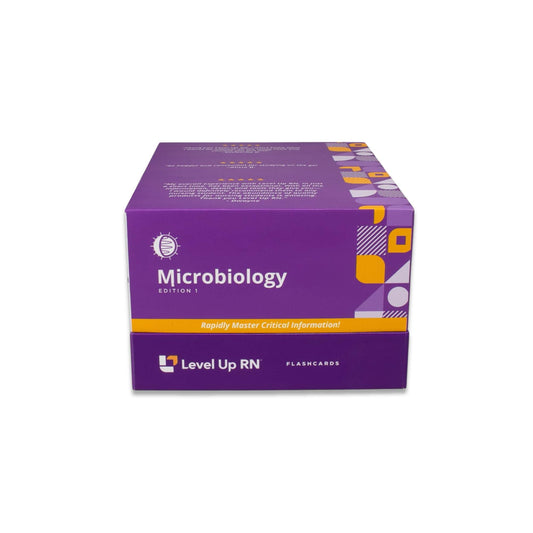Microbiology, part 51: Control of Growth - Microbial Control - Physical Methods
Physical methods of controlling microbial growth. This includes dry heat sterilization, moist heat sterilization (boiling, autoclave), pasteurization, refrigeration and freezing, high pressure, dessication (including lyophilization), osmotic pressure, and filtration. The terms thermal death point and thermal death time.
Quiz Questions
True or false: autoclaves kill all microbes except endospores.
True or false: autoclaves kill all microbes except endospores.
What term is used to describe the lowest temperature that will kill all microbes within 10 minutes?
What term is used to describe the lowest temperature that will kill all microbes within 10 minutes?
True or false: freezing is considered bacteriostatic.
True or false: freezing is considered bacteriostatic.
Is UV light a type of ionizing or non-ionizing radiation?
Is UV light a type of ionizing or non-ionizing radiation?
Full Transcript: Microbiology, part 51: Control of Growth - Microbial Control - Physical Methods
Full Transcript: Microbiology, part 51: Control of Growth - Microbial Control - Physical Methods
Hi, I'm Cathy with Level Up RN. In this video, we're going to talk about physical methods for controlling microbial growth. And then in my next video, we're going to talk about chemical methods. At the end of this video, I'm going to give you guys a little quiz to test your understanding of some of the key facts I'll be covering, so be sure to stay for that. And if you have our Level Up RN microbiology flashcards, go ahead and pull them out so you can follow along with me. Let's first talk about microbial control methods that use heat.
So dry heat sterilization is the direct application of high heat without the use of moisture to kill microbes. Examples of dry heat sterilization include direct flaming of inoculating loops and incineration.
Moist heat sterilization is the use of high heat and moisture to kill microbes. And it is more effective and more efficient than using dry heat. So boiling is one method that uses moist heat to kill microbes. It is effective at killing vegetative cells, which are cells that are actively growing and replicating, as well as some viruses. But it is not effective at killing endospores. So it is typically not used in laboratories or clinical settings to sterilize medical or laboratory supplies. It is typically best suited for personal use, such as the sanitization of baby bottles.
An autoclave, on the other hand, is frequently used in laboratories and clinical settings to sterilize equipment. An autoclave is a device that uses steam under pressure to achieve a higher temperature than boiling. Therefore, it is effective at killing all microbes, including endospores. However, additional heat and/or time is needed to destroy prions.
When it comes to controlling microbial growth in food products, pasteurization is frequently used. Classical pasteurization uses mild heat to kill off microbes that are responsible for foodborne illness or the spoilage of food products. But the heat isn't so high that it ruins the taste or consistency of the food. Examples of food products that are pasteurized include milk and juice.
Two other methods of pasteurization that you might want to be familiar with include HTST, which stands for High Temperature Short Time, and UHT, which stands for Ultra High Temperature. The treatment time with these methods is much shorter than with classical pasteurization. An example of a food product treated with UHT is shelf-stable milk, which can be stored at room temperature for up to six months without spoiling.
When it comes to evaluating the effectiveness of methods that use heat to kill microbes, there are two key terms that you should be familiar with, thermal death point and thermal death time. Thermal death point is the lowest temperature that will kill all microbes within 10 minutes. Thermal death time is the amount of time it takes to kill all microbes at a given temperature.
In addition to heat, refrigeration and freezing can also be used to control microbial growth. Household refrigerators are typically kept between 0 and 7 degrees Celsius. This temperature range has a bacteriostatic effect, meaning it slows the growth of the bacteria but doesn't kill the bacteria. Freezing temperatures below -2 degrees Celsius may kill some susceptible bacteria. But like refrigeration, it mostly has a bacteriostatic effect, because once the food thaws, then the microorganisms become active again, replicate, and can cause foodborne illness. It is also important to note that psychrophilic bacteria, meaning cold-loving bacteria, can survive in the presence of cold temperatures.
Next, let's talk about high pressure as a means of microbial control. High pressure is frequently used to kill microbes in food products in order to extend the shelf life of the product while still maintaining food quality. Examples of food products that use this food preservation method include juice, meat, and baby food.
Desiccation is the use of drying or dehydration to control microbial growth. This method is used to preserve foods, such as jerky and dried fruits like raisins. One specific method of desiccation is lyophilization, which is commonly known as freeze drying. This is where a food product is frozen and then placed in a vacuum.
Osmotic pressure can also be used to control microbial growth. This is where salt or sugar is added to a food product, which creates a hypertonic environment. This in turn causes water to leave the microbial cells, which causes the cells to shrink and dehydrate, which inhibits microbial activity. Examples of products that use this food preservation method include jams and cured meats.
Filtration is the physical separation of microbes from liquids or air, using a filter. So the pores in a filter are small enough to trap microorganisms, but large enough to let liquids or air pass through. Examples of filtration include a HEPA filter, which is used to filter air, and a membrane filter, which is used to filter liquids.
Finally, the last physical method of microbial control that we're going to talk about is radiation, including ionizing and non-ionizing radiation. Ionizing radiation uses short wavelength, high-intensity radiation, which leads to breaks in the DNA strands. Examples of ionizing radiation include x-rays and gamma rays. Ionizing radiation is used in food preservation as well as the sterilization of medical supplies. Of note, it can penetrate paper, plastic, wood, metal, and tissues.
Non-ionizing radiation is the use of longer wavelength, lower intensity radiation. It leads to the formation of thymine dimers in the DNA. An example of non-ionizing radiation is UV light. This type of radiation is used in water purification as well as the sterilization of laboratory materials. And of note, unlike ionizing radiation, non-ionizing radiation does not penetrate surfaces.
All right, it's quiz time. And I have four questions for you.
Question number one: autoclaves kill all microbes except endospores. True or false?
The answer is...false. Autoclaves kill endospores as well.
Question number two: what term is used to describe the lowest temperature that will kill all microbes within 10 minutes?
The answer is...the thermal death point.
Question number three: freezing is considered bacteriostatic, true or false?
The answer is...true. It will slow or inhibit bacterial growth, but it will not kill most bacteria.
Question number four: is UV light a type of ionizing or non-ionizing radiation?
The answer is...non-ionizing.
All right, that's it for this video. I hope it was helpful. Take care and good luck with studying.
[BLOOPERS]
An Ottawa-- an Ottawa Clave. So it is effective at cleaning-- killing, not cleaning them, killing them. HTST, which stands for High Time-- no, it doesn't. It's high time. High temperature.


